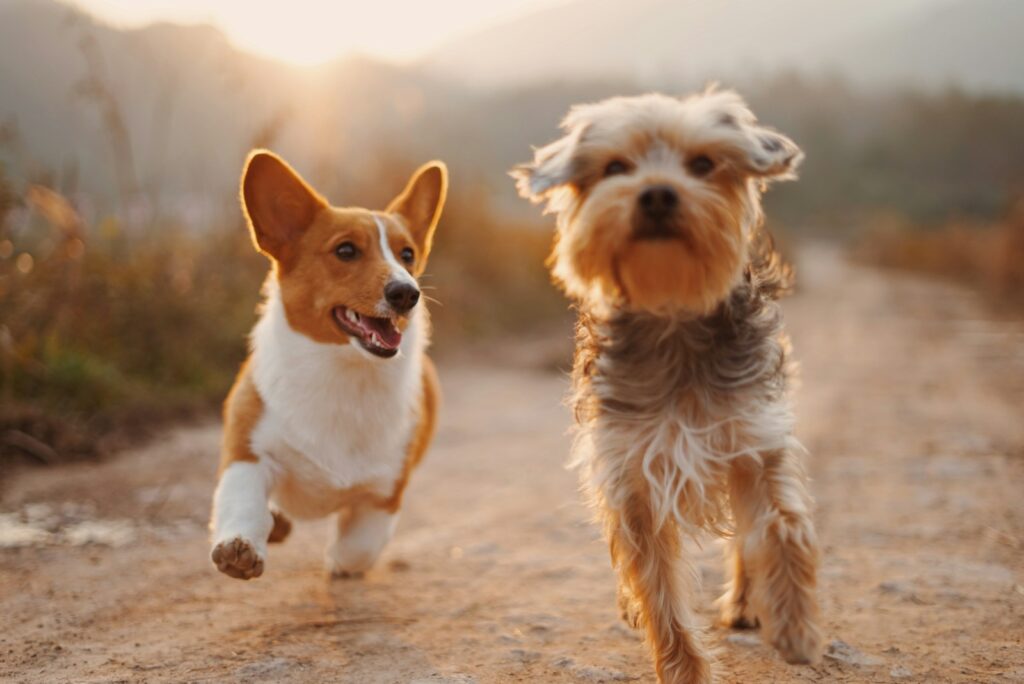Just like humans, our furry friends are also at risk from the sun’s harmful rays. Whether you’re planning a long day at the beach or simply going for a walk on a bright sunny day, it’s essential to be aware of how to protect your dog from sunburn and other UV dangers. You might not give it much thought, but dogs can suffer from sun damage too, leading to painful burns, skin cancer, or worse.
Understanding the risks and knowing how to mitigate them can keep your canine companion safe and healthy. Let’s explore some practical tips and preventive measures you can take to ensure your dog enjoys the sun safely.
What dog breeds are most susceptible to sunburn?
Dogs with thin or light-colored coats are generally more susceptible to sunburn. Breeds such as Dalmatians, Bull Terriers, and Whippets, which have short, fine hair and light pigmentation, are particularly vulnerable to the harmful effects of UV rays. Hairless breeds, like the Chinese Crested and the American Hairless Terrier, are at an even higher risk due to their lack of fur, which provides a natural barrier against the sun. These dogs require extra protection when exposed to sunlight.
Breeds with white or light-colored fur, such as Boxers and Bulldogs, are also prone to sunburn. The lighter pigmentation in their skin and fur does not offer as much protection against UV radiation, making them more susceptible to sun damage. Certain breeds with sparse or thin fur on specific parts of their bodies, like the Pit Bull Terrier and the Greyhound, can experience sunburn on areas with less hair coverage, such as the nose, ears, and belly. These spots are particularly sensitive and need special attention.
| Breed | Susceptible Areas | Additional Protection Needed |
|---|---|---|
| Boxer | Overall, especially the nose and ears | Sunscreen, clothing |
| Bulldog | Overall, especially the nose and ears | Sunscreen, clothing |
| Pit Bull Terrier | Nose, ears, belly | Sunscreen, cool compresses |
| Greyhound | Nose, ears, belly | Sunscreen, cool compresses |
What are the signs of sunburn in dogs?
One of the most noticeable signs of sunburn in dogs is redness on the skin. This is particularly evident in areas with less fur, such as the nose, ears, and belly. The skin may appear pinker than usual, especially in light-colored or thin-coated dogs. Another common sign is the presence of dry, cracked, or peeling skin. Just like humans, dogs can experience flaking or peeling in the sunburned areas as the skin begins to heal and regenerate.
Your dog may also exhibit signs of discomfort or pain. This can include excessive scratching, licking, or biting at the affected areas. They might also be more sensitive to touch in those regions. Swelling and inflammation can occur in more severe cases of sunburn. The affected skin may become puffy or swollen, indicating a stronger reaction to UV exposure.
Blisters or sores can develop on the skin if the sunburn is particularly severe. These can be painful and may require veterinary attention to prevent infection and promote healing. Behavioral changes can also be a sign of sunburn. Your dog might become more lethargic or irritable due to the discomfort caused by the sunburn. They may also seek out cooler, shaded areas more frequently.
Are there specific times of day when sun exposure is more dangerous for dogs?
| Time of Day | UV Index Level | Sun Exposure Risk for Dogs |
|---|---|---|
| 6 AM – 8 AM | Low (0-2) | Minimal |
| 8 AM – 10 AM | Moderate (3-5) | Low to Moderate |
| 10 AM – 2 PM | High (6-7) | High |
| 2 PM – 4 PM | High (6-7) | High |
| 4 PM – 6 PM | Moderate (3-5) | Low to Moderate |
| 6 PM – 8 PM | Low (0-2) | Minimal |
Ways for protecting your dogs from sunburn
Your furry friend’s skin is just as sensitive to the sun’s harsh rays as yours. So, how can you keep them safe? Here are some effective strategies:
Restrict Sun Exposure
The most straightforward way to protect your dog is to limit their exposure to direct sunlight, especially during peak hours from 10 AM to 4 PM. Keeping your pup indoors or in shaded areas during these times can significantly reduce the risk of sunburn.
Moisturizing Sunscreen
Applying dog-safe sunscreen can be highly effective. Look for an FDA-compliant, water-resistant formula specially designed for pets, devoid of zinc oxide, which can be toxic to them. Key ingredients like shea butter and jojoba butter help protect and moisturize their skin. Apply the sunscreen about 20 minutes before heading out and reapply every 4-6 hours, or immediately after swimming.
Protective Clothing
Just as you’d wear a hat or a long-sleeved shirt to protect yourself from the sun, similar options are available for dogs. Consider investing in protective clothing like sun shirts, suits, and even hats and goggles. These accessories can provide an extra layer of defense, particularly for white or light-colored dogs who are more susceptible to sunburn.
Create Shaded Areas
When spending time outdoors, make sure to have shaded areas where your dog can retreat from the sun. Portable dog tents, umbrellas, or simply setting up a spot under a tree can be effective solutions. Don’t forget to provide plenty of fresh water to keep them hydrated!
Be Mindful of Surfaces
Hot surfaces like concrete and sand can also contribute to your dog overheating and suffering from burns. When temperatures soar, opt for grassy areas or invest in protective booties to keep their paws safe.
By following these practical steps, you can enjoy the sunshine with your furry friend without worrying about the harmful effects of UV rays. Always monitor your dog’s skin and behavior for any signs of discomfort and consult your veterinarian with any concerns.
What types of sunscreen are safe for dogs?
When selecting a sunscreen for your dog, it is crucial to choose a product specifically formulated for pets. Human sunscreens often contain ingredients that can be toxic to dogs, such as zinc oxide Look for sunscreens that are fragrance-free and hypoallergenic to minimize the risk of skin irritation. Dogs have sensitive skin, and products with added fragrances or harsh chemicals can cause allergic reactions or discomfort. Hypoallergenic formulas are less likely to trigger these adverse effects.
Water-resistant sunscreens are particularly beneficial for dogs that enjoy swimming or playing in water. These sunscreens provide longer-lasting protection, even when your dog gets wet. However, it is still important to reapply the sunscreen as directed, especially after prolonged water exposure. Consider using sunscreens that contain natural ingredients such as aloe vera and vitamin E. These components can help soothe and moisturize your dog’s skin while protecting it from UV rays. Natural ingredients are generally gentler on the skin and reduce the likelihood of adverse reactions.
Spray-on sunscreens can be a convenient option for dogs, especially those with long or thick fur. These products allow for easy application and can cover larger areas more efficiently. However, ensure that the spray is applied evenly and avoid spraying near the dog’s face to prevent inhalation or eye irritation.para-aminobenzoic acid (PABA). Pet-safe sunscreens are designed to be non-toxic if ingested, which is important since dogs often lick their skin and fur. Consult your veterinarian before using any sunscreen on your dog. Your vet can recommend specific brands and formulations that are safe and effective for your pet’s unique needs. They can also guide you on how to properly apply sunscreen and address any concerns you may have about your dog’s skin health.
How can you create shaded areas for dogs outdoors?
One effective way to create shaded areas for dogs outdoors is by using a canopy or a pop-up tent. These portable structures can be easily set up in your yard or taken to the park, providing an instant shaded area where your dog can relax away from direct sunlight. Planting trees or large shrubs in your yard can offer natural shade for your dog. Trees with broad leaves or dense foliage are particularly effective at blocking out the sun’s rays. Over time, as the trees grow, they will provide more extensive shaded areas.
Installing a pergola or gazebo in your outdoor space can also provide a permanent shaded area for your dog. These structures can be customized with climbing plants or retractable covers to enhance the amount of shade they offer. Using shade sails is another versatile option. These fabric canopies can be stretched between poles or attached to existing structures to create shaded zones. They are available in various sizes and shapes, allowing you to tailor the coverage to your specific needs.
A doghouse with an extended roof or a built-in awning can provide a dedicated shaded spot for your pet. Ensure that the doghouse is well-ventilated to prevent it from becoming too hot inside, and consider placing it in a naturally cooler area of your yard. For a more temporary solution, you can use patio umbrellas to create shaded areas. These umbrellas can be easily moved and adjusted throughout the day to ensure that your dog always has access to shade, regardless of the sun’s position.
What are the best protective clothing options for dogs?
When it comes to protecting your dog from sunburn, one of the most effective methods is using protective clothing specifically designed for pets. Dog sun shirts are a popular option. These shirts are made from lightweight, breathable fabric that often includes UV protection. They cover a significant portion of your dog’s body, shielding them from harmful rays while keeping them cool and comfortable. Another excellent choice is a dog sun hat. These hats are designed to protect your dog’s face, ears, and neck from direct sunlight. They come in various styles and sizes to fit different breeds and can be particularly useful for dogs with thin or light-colored fur, which are more susceptible to sunburn.
For dogs that spend a lot of time outdoors, full-body suits can offer comprehensive protection. These suits cover most of the dog’s body, including the legs and torso, and are made from UV-resistant materials. They are especially beneficial for dogs with short hair or those that have recently been shaved. If your dog is not comfortable wearing full-body suits or shirts, consider using UV-protective bandanas or scarves. These accessories can be tied around your dog’s neck to provide some level of protection to the more vulnerable areas without causing discomfort. They are easy to put on and take off, making them a convenient option for short outdoor activities.
Conclusion
Understanding and mitigating the risks of sunburn and UV exposure for your dog can make a significant difference in their overall health and well-being. By taking simple yet effective steps like restricting sun exposure, using pet-safe sunscreen, and investing in protective clothing, you can enjoy outdoor adventures without compromising your furry friend’s safety. Always stay vigilant for signs of sunburn and consult your vet if you notice any issues. Armed with this knowledge, you and your dog can look forward to many sun-filled days, worry-free.



